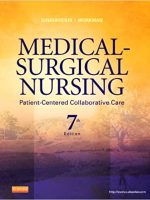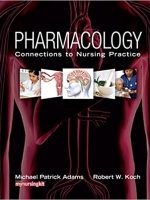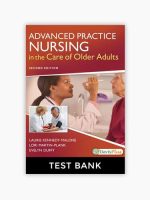Preparing for the NR283 exam can be a daunting task, especially when faced with a vast amount of information to cover. Understanding key concepts related to nursing, physiology, and pharmacology is essential for success in the exam. Here, we will delve into some common questions and answers related to the NR283 exam, along with a breakdown of important topics covered in each chapter.
### FAQ
#### 1. What does NR283 exam cover?
The NR283 exam typically covers topics related to nursing, physiology, pharmacology, and pathology. It includes questions on cellular adaptations, dehydration, genetic disorders, inflammatory responses, immune system function, and antimicrobial medications.
#### 2. How can I prepare for the NR283 exam?
To prepare for the NR283 exam, it is important to review your course materials, attend lectures, participate in study groups, and practice with sample questions. Additionally, creating a study schedule and seeking clarification on any concepts you find difficult can help improve your understanding and performance in the exam.
#### 3. Are there any specific study resources recommended for the NR283 exam?
While there are various study resources available, including textbooks, online resources, and study guides, it is important to focus on the materials provided by your course instructor. They are most likely to align with the content covered in the exam.
#### 4. How should I approach answering questions in the NR283 exam?
When answering questions in the NR283 exam, carefully read each question and all the answer choices before selecting the most appropriate option. Pay attention to keywords and phrases that may provide clues to the correct answer. If unsure, it is advisable to make an educated guess rather than leaving a question unanswered.
### Conclusion
The NR283 exam covers a wide range of topics related to nursing and healthcare, including cellular adaptations, dehydration, genetic disorders, inflammatory responses, immune system function, and antimicrobial medications. By thoroughly understanding these concepts and practicing with sample questions, students can better prepare themselves for success in the exam. Remember to seek clarification on any challenging topics and utilize available study resources for effective exam preparation. Good luck with your exam preparation!Chapter 20 discusses various aspects of cancer, including tumor characteristics, warning signs, treatment effects, and risk factors. It also touches on staging systems and definitions related to cancer. Understanding these concepts is crucial for healthcare professionals in diagnosing and treating cancer effectively.
One key point highlighted is the difference between benign and malignant tumors. Benign tumors are characterized by relatively normal-looking cells, while malignant tumors possess invasive qualities and can metastasize to distant sites. Recognizing warning signs of cancer, such as unusual bleeding, changes in bowel habits, or skin lesions, is essential for early detection and treatment.
The adverse effects of chemotherapy and radiation therapy, like thrombocytopenia, nausea, and alopecia, underscore the need for personalized care and symptom management for cancer patients. Remission, defined by the absence of signs and symptoms, marks a critical phase in cancer treatment and management.
High-risk factors for cancer, including human papillomavirus infection, chronic inflammation, repeated sun exposure, and family history, emphasize the multifactorial nature of cancer development. Understanding these risk factors can aid in preventative strategies and early intervention.
Lastly, the concept of staging malignant tumors based on factors like tumor size, lymph node involvement, and metastases helps in determining the extent and progression of cancer. Healthcare professionals rely on staging systems to guide treatment decisions and predict patient outcomes accurately.
In conclusion, Chapter 20 provides valuable insights into the complex nature of cancer, emphasizing the importance of early detection, personalized treatment, and comprehensive care for cancer patients. By understanding tumor characteristics, warning signs, treatment effects, risk factors, and staging systems, healthcare professionals can effectively manage and support individuals affected by cancer.
**FAQs:**
1. **What are the major adverse effects of chemotherapy and radiation therapy?**
– The significant adverse effects include thrombocytopenia, nausea, constipation, alopecia, and weight loss.
2. **What defines remission in cancer treatment?**
– Remission is typically defined as a period in which signs and symptoms of cancer are absent.
3. **What are some high-risk factors for developing cancer?**
– High-risk factors include human papillomavirus infection, chronic inflammation, repeated sun exposure, and a family history of cancer.
4. **How are malignant tumors staged at the time of diagnosis?**
– Malignant tumors are staged based on factors such as tumor size, involvement of lymph nodes, and the presence of metastases.
5. **What distinguishes benign tumors from malignant tumors?**
– Benign tumors consist of relatively normal-looking cells and do not typically invade surrounding tissues, while malignant tumors are invasive and have the potential to metastasize.
In conclusion, understanding the concepts discussed in Chapter 20 is vital for healthcare professionals in effectively managing cancer patients. By recognizing tumor characteristics, warning signs, treatment effects, risk factors, and staging systems, healthcare providers can offer comprehensive care and support to individuals battling cancer.










Be the first to review “NR283 Exam 1 (ONLINE) Questions Bank with Answers (Latest-2021 – 2022)”